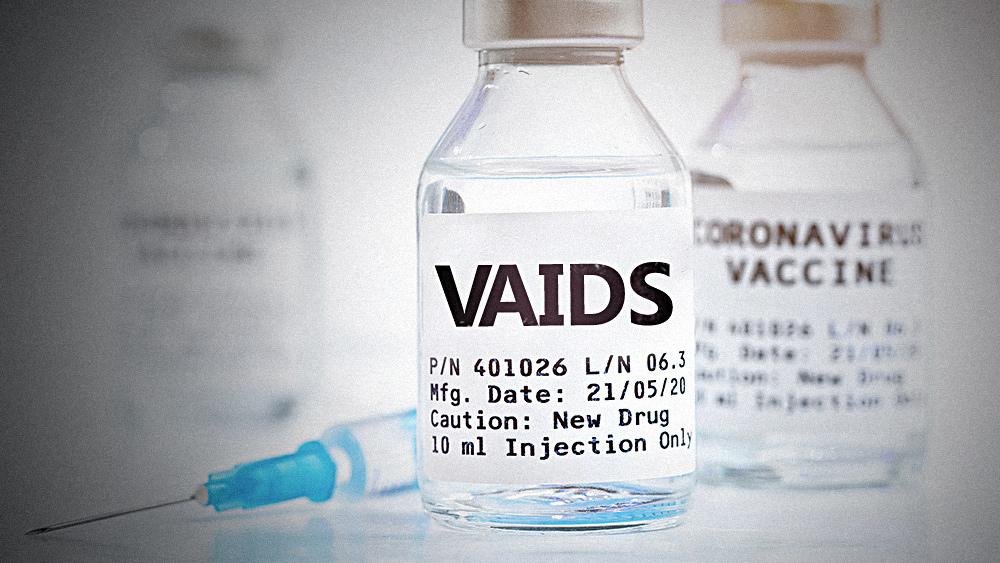How early exposure to mercury and aluminum impacts brain development, immune function
07/17/2025 / By Olivia Cook

- Research published in the International Journal of Environmental Research and Public Health examines the potential effects of early exposure to ethylmercury (thimerosal) and aluminum in vaccines on infant brain development and immune function.
- Babies, especially premature and low-birth-weight infants, may be more sensitive to these substances due to their rapidly developing nervous and immune systems.
- Animal studies suggest that ethylmercury and aluminum can affect brain chemistry, learning and memory, with some research indicating gender-based differences in susceptibility.
- Thimerosal and aluminum have been linked to allergic reactions, inflammation and rare conditions like macrophagic myofasciitis (MMF).
- Scientists call for more studies on long-term effects, safer vaccine formulations and personalized guidelines for vulnerable infants to ensure both vaccine effectiveness and safety.
As science advances, researchers continue to examine the safety of certain vaccine ingredients, particularly thimerosal, a preservative containing ethylmercury (EtHg), and aluminum-based adjuvants (ABAs) designed to enhance immune response.
A study published in the International Journal of Environmental Research and Public Health (IJERPH) raises important questions about how early exposure to these chemicals – whether through vaccines or through other environmental sources – might impact infant brain development and immune function. The study’s findings highlight the need for continued research to fully understand the long-term effects of these toxic vaccine ingredients on children’s health.
Infants and young children can be exposed to mercury and aluminum in multiple ways, with vaccines being one of the primary sources. Some routine childhood immunizations contain thimerosal, which helps prevent bacterial contamination in multi-dose vials, while aluminum adjuvants strengthen the body’s immune response to vaccines.
Beyond vaccines, babies may ingest small amounts of these heavy metals through breast milk, formula or food, as mercury is found in certain fish and grains, and aluminum is present in medications, processed foods and water.
The study points out that the amount of aluminum and mercury a baby receives from vaccines often exceeds what they would absorb from dietary sources. For instance, a single dose of the hepatitis B vaccine administered at birth contains more aluminum than a baby would consume through six months of breastfeeding. Given that an infant’s body and brain are still developing, researchers stress the importance of evaluating the potential risks of such exposure.
During the early months of life, a baby’s brain undergoes rapid growth, forming the neural connections that shape behavior, cognitive function and learning. At this stage, the developing nervous system is highly sensitive to external influences, including environmental toxins.
The study highlights that premature and low-birth-weight infants may be at greater risk, as their bodies are less efficient at processing and eliminating toxins. Since vaccine doses are typically standardized rather than adjusted based on weight, smaller infants may experience higher relative exposure to mercury and aluminum compared to larger, fuller-term babies.
Mercury and aluminum affect brain development and immune function
Scientists have been investigating the potential impact of thimerosal and aluminum on childhood neurodevelopment for years. Research suggests that early exposure to these chemicals may be linked to negative changes in brain function.
Animal studies provide some of the most compelling evidence. In mice, exposure to ethylmercury at doses comparable to those found in vaccines (in the form of thimerosal) led to disruptions in key brain receptors responsible for cognitive function, increased brain cell death, and learning and memory impairments. Notably, male mice appeared to be more affected than females, raising questions about gender-based differences in susceptibility.
Similar concerns have been raised about aluminum. Research shows that aluminum can accumulate in the brain and studies in rodents suggest that vaccine-relevant doses could lead to neurological changes. Certain genetic factors may also make some individuals more vulnerable to its effects.
Beyond potential neurologic effects, mercury and aluminum have also been studied for their impact on the immune system. Thimerosal has been linked to allergic reactions, with some children developing mild skin sensitivity to the preservative. Researchers are still investigating whether thimerosal exposure could contribute to broader immune system changes.
Aluminum adjuvants have been associated with localized immune responses, such as persistent itching nodules at injection sites. In rare cases, they have been linked to macrophagic myofasciitis (MMF), a condition characterized by muscle weakness and developmental delays. However, no definitive clinical syndrome has been established.
What scientists are recommending
Researchers emphasize the need for continued research to better understand the long-term effects of early exposure to mercury and aluminum in vaccines. They argue that safety standards should be continually reassessed, particularly for vulnerable populations like preterm and low-birth-weight infants.
Parents, too, should have access to transparent, science-based information to make informed choices about their child’s immunization schedule.
Researchers recommend:
- Studying the combined effects of mercury and aluminum: Most research examines these substances separately, yet infants are often exposed to both simultaneously.
- Long-term studies on childhood development: Tracking children’s cognitive and immune health over time could provide clearer insights into any harmful effects.
- Exploring safer vaccine formulations: Developing thimerosal-free alternatives and evaluating other adjuvants could help minimize health risks.
- Personalized vaccination guidelines: Adjusting vaccine recommendations for premature and low-birth-weight infants could help reduce their exposure levels.
Find more related stories at Chemicals.news.
Watch this video to learn about the mice study that showed aluminum in vaccines causes cognitive deficits and possibly Parkinson’s and Alzheimer’s disease.
This video is from the Be Children of Light channel on Brighteon.com.
More related stories:
Study raises questions about potential effects of vaccine ingredients on children’s health.
Autism and pregnancy: What science tells us about risk factors.
Sources include:
Submit a correction >>
Tagged Under:
Aluminum adjuvants, brain damaged, brain development, brain function, brain health, childhood vaccines, ethylmercury, infant's health, neurological development, poison, real investigations, research, Thimerosal, toxic chemicals, toxic ingredients, toxins, vaccine damage, vaccine ingredients, vaccine injury
This article may contain statements that reflect the opinion of the author





















